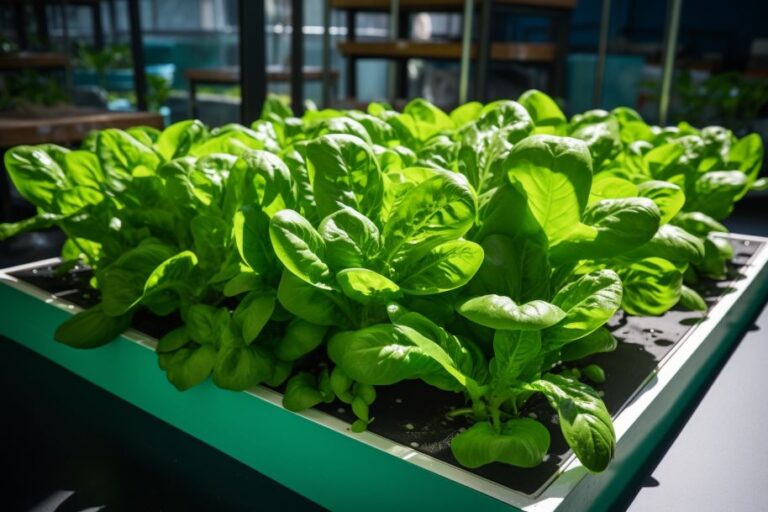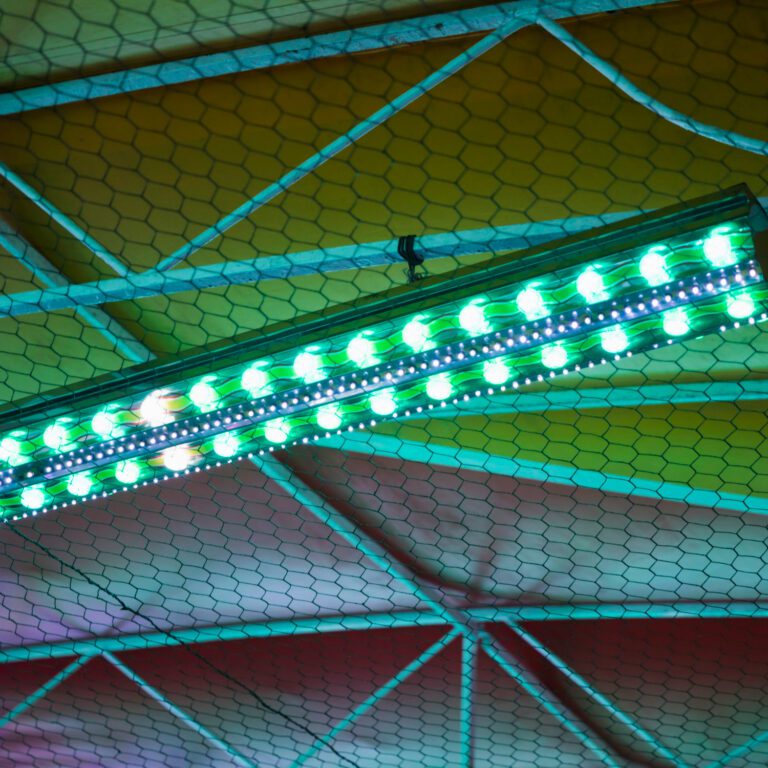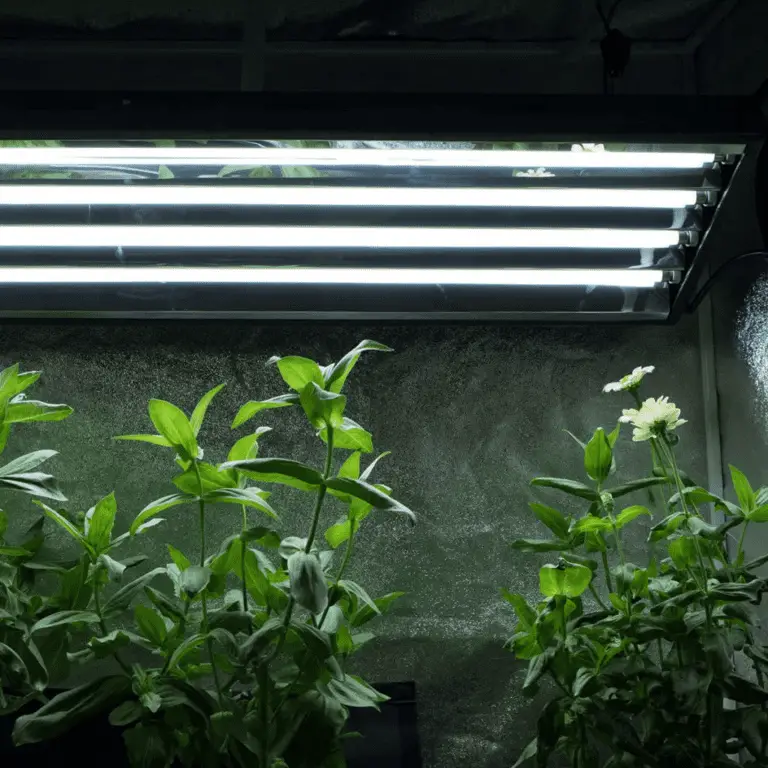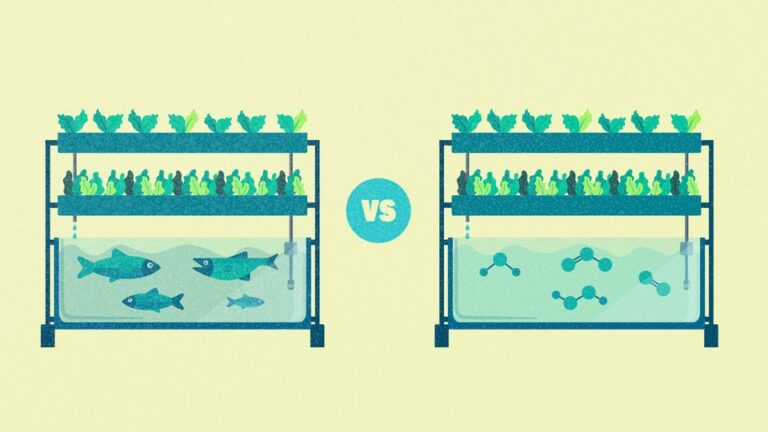Overcoming Grow Lights Drawbacks for Healthier Plants
Table of Contents
Understanding the limitations of grow lights
When it comes to indoor gardening, grow lights play a crucial role in providing the necessary light energy for plant growth. However, it is important to understand that grow lights have certain limitations that need to be considered. One limitation is the inability to replicate the full spectrum of natural sunlight. While modern grow lights are designed to provide a wide range of light wavelengths, they may still not be able to match the complexity of sunlight. This can affect the overall quality and nutritional value of the plants being grown.
Another limitation of grow lights is their coverage area. Each grow light has a specific footprint, which determines the amount of space it can effectively cover. For larger indoor gardens, multiple grow lights may be required to ensure uniform light distribution. Additionally, the distance between the grow lights and the plants should be carefully managed to avoid the risk of light burn or inadequate light exposure. By understanding these limitations, gardeners can make informed decisions about the type and placement of grow lights to optimize plant growth and yield.
• Grow lights cannot replicate the full spectrum of natural sunlight
• Modern grow lights provide a wide range of light wavelengths but still fall short compared to sunlight
• The inability to match sunlight complexity can affect plant quality and nutritional value
• Each grow light has a specific coverage area or footprint
• Larger indoor gardens may require multiple grow lights for uniform light distribution
• Distance between grow lights and plants should be carefully managed to avoid light burn or inadequate exposure
By understanding these limitations, gardeners can make informed decisions about the type and placement of grow lights. This knowledge will help optimize plant growth and yield in indoor gardening settings.
The importance of choosing the right type of grow light
When it comes to indoor gardening, choosing the right type of grow light is of utmost importance. Grow lights are artificial light sources that provide the necessary light spectrum for plants to photosynthesize and grow. Different types of grow lights emit different wavelengths of light, and the choice of grow light can greatly impact plant growth and development.
One key factor to consider when selecting a grow light is the light spectrum it emits. Plants require a specific range of wavelengths for optimal photosynthesis, with blue and red light being the most crucial. Blue light stimulates vegetative growth, while red light promotes flowering and fruiting. Therefore, it is essential to choose a grow light that provides the appropriate balance of blue and red light, depending on the growth stage of the plants.
Additionally, the intensity of the grow light should be taken into account. Light intensity affects the rate of photosynthesis, and different plants have varying light requirements. High-intensity lights are ideal for plants that require a lot of light, such as vegetables and flowering plants, while low-intensity lights are suitable for more shade-tolerant plants. Consider the specific light requirements of your plants and choose a grow light that can provide the necessary intensity for optimal growth.
Overall, selecting the right type of grow light is crucial for successful indoor gardening. By considering the light spectrum and intensity, you can provide your plants with the ideal lighting conditions for healthy growth.
• The light spectrum emitted by grow lights is a key factor to consider.
• Blue light stimulates vegetative growth, while red light promotes flowering and fruiting.
• Choose a grow light that provides the appropriate balance of blue and red light for your plants’ growth stage.
• Light intensity also plays a role in plant growth and should be taken into account when selecting a grow light.
• High-intensity lights are ideal for plants that require a lot of light, such as vegetables and flowering plants.
• Low-intensity lights are suitable for shade-tolerant plants.
• Consider the specific light requirements of your plants before choosing a grow light.
Evaluating the intensity and spectrum of grow lights
When evaluating the intensity and spectrum of grow lights, it is essential to understand how these factors impact plant growth and development. The intensity of a grow light refers to the amount of light emitted and directly influences photosynthesis, which is crucial for plant energy production. Higher light intensity can promote faster growth and higher yields, but it can also increase the risk of light burn and other stress-related issues.
To ensure optimal plant growth, it is important to choose a grow light with a spectrum that matches the specific needs of the plants being cultivated. Different plants have varying light requirements throughout their growth stages. For example, young seedlings benefit from blue light to promote leaf growth, while flowering plants require more red light to stimulate bud development. Understanding the impact of different light spectrums on plant growth allows gardeners to tailor their lighting setup to this specific needs.
• The intensity of a grow light directly affects photosynthesis and plant energy production.
• Higher light intensity can lead to faster growth and higher yields, but it also increases the risk of light burn and stress-related issues.
• Choosing a grow light with the right spectrum is crucial for optimal plant growth.
• Different plants have varying light requirements at different stages of their growth.
• Young seedlings benefit from blue light for leaf growth, while flowering plants need more red light for bud development.
• Understanding the impact of different light spectrums helps gardeners customize their lighting setup.
Managing the distance between plants and grow lights
Proper management of the distance between plants and grow lights is crucial for the successful cultivation of healthy and thriving plants. The distance at which the grow lights are placed from the plants is a critical factor that affects the intensity and distribution of light received by the plants.
When positioning grow lights, it is essential to consider the specific needs and characteristics of the plants being grown. Different plant species have varying light requirements, and adjusting the distance between the plants and the grow lights can help achieve optimal light exposure. As a general guideline, seedlings and young plants require the grow lights to be placed closer to them to provide adequate light for their growth and development. On the other hand, mature plants may need the grow lights to be positioned farther away to prevent excessive heat and light stress. It is recommended to consult plant-specific guidelines or seek advice from horticulture experts to determine the ideal distance for the grow lights in your setup.
Additionally, monitoring the distance between plants and grow lights throughout the growth cycle is essential. As plants grow, it is important to adjust the position of the lights accordingly to maintain an optimal light distribution. Regularly inspecting the plants for signs of light stress or stretching can help identify if the lights need to be repositioned. By ensuring the right distance between plants and grow lights, gardeners can create a well-balanced light environment that promotes healthy growth and maximizes the potential of their plants.
• Proper management of the distance between plants and grow lights is crucial for successful plant cultivation.
• The distance between plants and grow lights affects the intensity and distribution of light received by the plants.
• Different plant species have varying light requirements, so adjusting the distance can help achieve optimal light exposure.
• Seedlings and young plants generally require closer placement of grow lights for adequate light.
• Mature plants may need grow lights positioned farther away to prevent excessive heat and light stress.
• Consult plant-specific guidelines or seek advice from horticulture experts for ideal distances in your setup.
• Monitoring and adjusting the distance throughout the growth cycle is important for maintaining optimal light distribution.
• Regularly inspecting plants for signs of light stress or stretching can indicate if lights need to be repositioned.
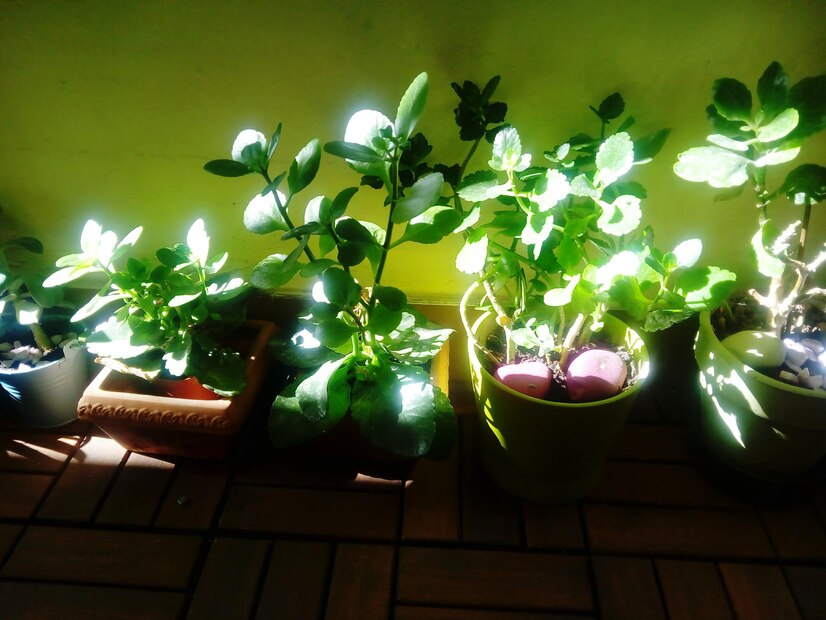
Implementing proper ventilation and airflow systems
Proper ventilation and airflow systems are essential components of any grow room or indoor garden. Adequate air circulation helps maintain a healthy environment for plants, preventing the buildup of excess heat, humidity, and stale air. It also ensures the distribution of carbon dioxide (CO2) and proper exchange of oxygen, facilitating photosynthesis and promoting optimal plant growth.
To implement proper ventilation and airflow, it is important to consider the size and layout of the grow room, as well as the number of plants being cultivated. A well-designed ventilation system typically includes intake and exhaust fans strategically placed to ensure a continuous flow of fresh air and removal of stale air. The use of carbon filters can also help control odors, especially in enclosed spaces.
Additionally, air movement within the grow room can be enhanced by using oscillating fans or air circulation devices. These help prevent stagnant air pockets and ensure that plants receive a consistent airflow. It is crucial to regularly monitor and adjust the fan settings to avoid excessive air movement, as this can cause damage to delicate plants or disrupt pollination for certain species.
Good ventilation and airflow not only promote healthier plants but also help prevent the development of common issues such as mold, mildew, and pests. By creating an optimal environment, growers can maximize the potential of their plants and achieve the desired yields.
• Proper ventilation and airflow systems are essential for maintaining a healthy environment in grow rooms or indoor gardens.
• Adequate air circulation prevents the buildup of excess heat, humidity, and stale air.
• It ensures the distribution of carbon dioxide (CO2) and proper exchange of oxygen, facilitating photosynthesis and promoting optimal plant growth.
• Consider the size and layout of the grow room when designing a ventilation system.
• Intake and exhaust fans should be strategically placed to ensure a continuous flow of fresh air and removal of stale air.
• Carbon filters can help control odors in enclosed spaces.
• Enhance air movement with oscillating fans or air circulation devices to prevent stagnant pockets of air.
• Regularly monitor and adjust fan settings to avoid excessive airflow that could damage delicate plants or disrupt pollination for certain species.
• Good ventilation helps prevent issues like mold, mildew, and pests from developing.
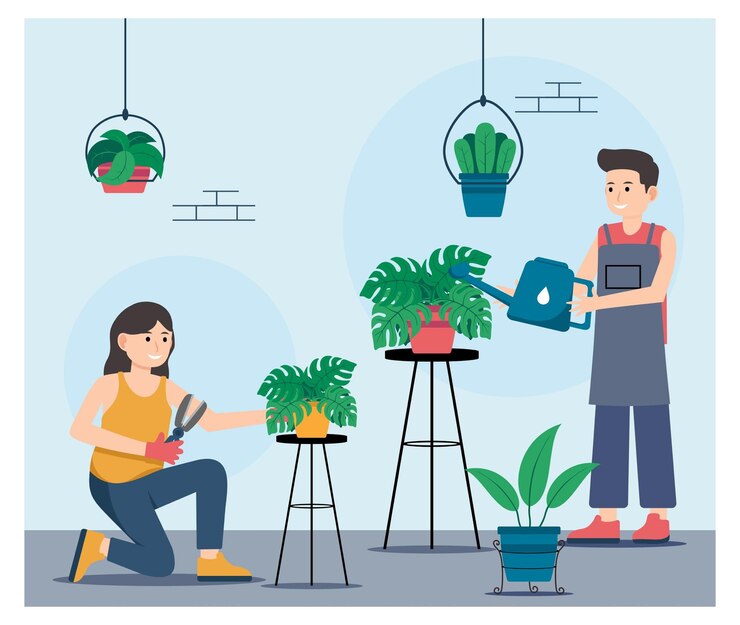
Avoiding excessive heat buildup from grow lights
Excessive heat buildup from grow lights can be detrimental to the health and growth of your plants. High temperatures can lead to stress, dehydration, and even plant death. Therefore, it is crucial to implement strategies to avoid heat buildup and maintain a favorable environment for your plants.
One effective method to prevent excessive heat is by incorporating proper ventilation and airflow systems in your growing space. By ensuring good air circulation, you can dissipate heat and maintain a more balanced temperature. This can be achieved through the use of fans, exhaust systems, or even open windows to facilitate air movement. Additionally, positioning your grow lights strategically to avoid blocking air flow can further contribute to reducing heat buildup. Remember to regularly monitor the temperature and humidity levels and make adjustments as necessary to create an optimal growing environment for your plants.
Another aspect to consider when avoiding heat buildup is choosing the right type of grow lights. Some lighting technologies, such as traditional high-intensity discharge (HID) lights, produce more heat compared to newer options like light-emitting diodes (LEDs). LEDs are known for their energy efficiency and minimal heat output, making them a popular choice for indoor gardening. Selecting grow lights that emit less heat can not only help mitigate temperature issues but also reduce the risk of light burn on your plants.
By implementing adequate ventilation, selecting the appropriate grow lights, and maintaining optimal environmental conditions, you can effectively avoid excessive heat buildup in your grow space. Taking these precautions will provide a more favorable environment for your plants, promoting healthier growth and ultimately contributing to a successful gardening experience.
• Implement proper ventilation and airflow systems in your growing space
• Use fans, exhaust systems, or open windows to facilitate air movement
• Position grow lights strategically to avoid blocking air flow
• Regularly monitor temperature and humidity levels and make adjustments as necessary
• Choose grow lights that emit less heat, such as LEDs
• LED lights are energy efficient and have minimal heat output
• Adequate ventilation and appropriate grow lights can help maintain optimal environmental conditions for plant growth
Minimizing the risk of light burn on plants
Light burn is a common problem that can occur when plants are exposed to excessive amounts of light, especially in indoor gardening settings. This can lead to leaf tips and edges becoming discolored, dried out, or even burnt. To minimize the risk of light burn on plants, it is crucial to carefully manage the intensity and duration of light exposure.
One effective way to minimize light burn is by adjusting the distance between the plants and the grow lights. The closer the plants are to the light source, the higher the intensity of light they receive. By keeping a safe distance, plants can still benefit from the light without being overwhelmed. It is important to understand the specific light requirements of different plant species and adjust the distance accordingly. Regular monitoring of plant growth and leaf color can help identify any signs of light burn, allowing for prompt adjustments to be made. Additionally, providing proper ventilation and airflow can help dissipate heat from the grow lights, reducing the chances of light burn occurring.
• Adjust the distance between plants and grow lights
• Understand the specific light requirements of different plant species
• Regularly monitor plant growth and leaf color for signs of light burn
• Provide proper ventilation and airflow to dissipate heat from grow lights
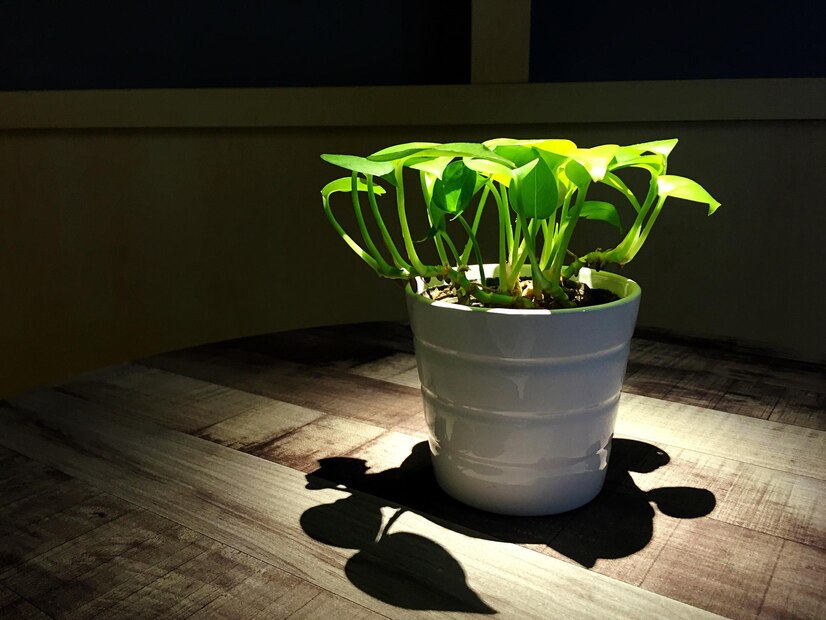
Addressing the issue of shadowing caused by grow lights
One common challenge that gardeners face when using grow lights is the issue of shadowing. Shadowing occurs when plants positioned underneath the grow lights cast shadows on other plants, blocking their access to the light. This can lead to uneven growth and reduced plant health. Fortunately, there are several strategies that can be employed to address this issue and promote the optimal growth of all plants.
Firstly, it is important to properly space out the plants to ensure adequate light distribution. This can be achieved by positioning the plants in a way that allows each one to receive an equal amount of light. Additionally, rotating the plants regularly can help minimize shadowing, as it allows each plant to have a turn in the most optimal light position. By implementing these measures, gardeners can create a more uniform light exposure for all plants, resulting in healthier and more evenly grown specimens.
• Properly space out the plants to ensure adequate light distribution
• Position the plants in a way that allows each one to receive an equal amount of light
• Rotate the plants regularly to minimize shadowing and give each plant a turn in optimal light position
• Create a more uniform light exposure for all plants, resulting in healthier and more evenly grown specimens
Balancing the lighting schedule for optimal plant growth
To achieve optimal plant growth, it is crucial to carefully balance the lighting schedule. The duration and intensity of light exposure play significant roles in the photosynthesis process, which is essential for plant development. Too much or too little light can have detrimental effects on plants, affecting their growth rate and overall health.
When determining the lighting schedule, it is important to consider the specific needs of different plant species. Some plants require longer periods of light exposure while others thrive with shorter intervals. Consulting reliable sources or seeking advice from experts can provide valuable insights into the lighting requirements of specific plants.
Furthermore, it is essential to maintain consistency in the lighting schedule to avoid causing disruptions to the plants’ natural growth patterns. Sudden changes in light duration or intensity can shock plants and hinder their development. Utilizing timers or automated systems can help maintain a consistent lighting schedule, ensuring that plants receive the ideal amount of light each day.
Ultimately, achieving optimal plant growth through a balanced lighting schedule requires careful planning and consideration. By understanding the unique lighting requirements of different plants and maintaining consistency in their light exposure, gardeners can promote healthy growth and maximize the potential of their plants.
• Carefully balancing the lighting schedule is crucial for optimal plant growth.
• Duration and intensity of light exposure are significant factors in the photosynthesis process.
• Too much or too little light can negatively impact plant growth and overall health.
• Consider the specific needs of different plant species when determining the lighting schedule.
• Consulting reliable sources or experts can provide valuable insights into specific plants’ lighting requirements.
• Maintain consistency in the lighting schedule to avoid disrupting natural growth patterns.
• Sudden changes in light duration or intensity can shock plants and hinder their development.
• Utilize timers or automated systems to ensure a consistent lighting schedule for plants.
• By understanding unique lighting requirements and maintaining consistency, gardeners can promote healthy growth.
Certainly! Balancing the lighting schedule is crucial for optimal plant growth. Here’s a table with guidelines for managing light exposure to promote healthy plants:
| Aspect | Recommendation |
|---|---|
| Duration of Light | – Start Slow: In a newly planted indoor garden, begin with 6–8 hours of light exposure per day. Allow plants to acclimate to their surroundings. |
- Gradual Increase: As plants grow, gradually extend the lighting duration to 8–12 hours daily.
- Monitor Algae: If algae becomes problematic, reduce the duration of light exposure . | | Light Quality | – Full Spectrum: Provide a full spectrum of light that includes all colors (blue, red, and others). Most plants benefit from 8 to 10 hours of light per day.
- Variations: Depending on the plant type and existing natural light, adjust the duration. Some fruiting plants may require up to 18 hours of light daily . | | Energy Efficiency | – LED Lights: Consider using energy-efficient LED lights. They allow customization of light spectrum and emit minimal heat, reducing the risk of damage to plants.
- Balance with Sunlight: While artificial light is essential, natural sunlight remains crucial for overall plant health . |
Remember that each plant species has unique requirements, so observe your plants closely and adjust the lighting schedule accordingly.
Supplementing natural sunlight for healthier plants
To ensure healthier plants, it is crucial to consider supplementing natural sunlight with the use of grow lights. While natural sunlight is the primary source of energy for plants, it may not always be sufficient, especially in indoor gardening environments or during seasons with limited sunshine. Grow lights serve as an effective alternative, providing plants with the necessary light spectrum for photosynthesis and promoting optimal growth and development.
By supplementing natural sunlight with grow lights, gardeners have greater control over the light intensity and duration, allowing them to tailor the lighting conditions to meet the specific requirements of different plant species. Additionally, grow lights enable year-round gardening, regardless of external factors such as weather or location. This freedom allows gardening enthusiasts to cultivate a wide range of plants, including those that may not thrive in their natural habitats.
However, it is essential to choose the right type of grow light to ensure successful supplementation of natural sunlight. Different types of grow lights, such as fluorescent, LED, or high-intensity discharge (HID) lights, possess varying light spectrums and energy efficiencies. Therefore, it is crucial to evaluate the specific needs of the plants and select a grow light that aligns with their requirements. With the correct selection and implementation of grow lights, gardeners can effectively supplement the natural sunlight to maintain healthier plants throughout the year.
• Supplementing natural sunlight with grow lights allows for greater control over light intensity and duration.
• Grow lights enable year-round gardening, regardless of external factors like weather or location.
• Choosing the right type of grow light is essential for successful supplementation of natural sunlight.
• Different types of grow lights, such as fluorescent, LED, or HID lights, have varying light spectrums and energy efficiencies.
• Evaluating the specific needs of plants is crucial in selecting a grow light that aligns with their requirements.
Supplementing natural sunlight is essential for maintaining healthy plants, especially when growing them indoors. Here’s a table outlining key aspects of using LED lights as an alternative to sunlight for plant growth:
| Aspect | Explanation |
|---|---|
| Energy Efficiency | LED lights are highly energy-efficient compared to traditional bulbs. They convert a higher percentage of electricity into usable light, resulting in significant energy savings. |
| Customizable Spectrum | LED lights can be customized to emit specific wavelengths of light. This flexibility allows growers to tailor the light spectrum to meet the unique needs of different plants at various growth stages. This control enhances plant productivity and quality. |
| Reduced Heat Output | LED lights emit minimal heat, unlike traditional options. This is beneficial for indoor gardening, as it reduces the risk of heat damage to plants and eliminates the need for additional cooling systems. |
| Long Lifespan | LED lights have an impressively long lifespan, lasting up to 10 times longer than traditional bulbs. This reduces the frequency of bulb replacements, saving both time and money. |
| Compact and Flexible | LED lights are compact and can be easily installed in tight spaces |
Promoting proper plant growth and development with the use of grow lights
Grow lights play a crucial role in promoting proper plant growth and development, particularly in situations where natural sunlight is limited or unavailable. By providing a source of artificial light that can closely mimic the spectrum and intensity of the sun, grow lights nourish plants with the necessary energy for photosynthesis. As a result, plants are able to undergo photosynthesis and produce carbohydrates, which are vital for their growth and survival.
One of the key advantages of using grow lights is the ability to control the duration and intensity of light exposure. This means that gardeners can tailor the lighting schedule to the specific needs of different plant species, allowing them to optimize growth and yield. By carefully adjusting the distance between the grow lights and plants, as well as monitoring the temperature and humidity levels in the cultivation environment, gardeners can create ideal conditions for their plants to thrive.
With the proper implementation and management of grow lights, gardeners can promote healthier plant growth and development. However, it is important to recognize that grow lights have their limitations. While they can provide the necessary light energy for photosynthesis, they are unable to replicate the full spectrum of natural sunlight. As a result, it may be necessary to supplement the use of grow lights with natural sunlight, especially for plants that require a broader range of wavelengths for optimal growth. Additionally, it is essential to ensure proper ventilation and airflow to prevent heat buildup and minimize the risk of light burn on plants.
• Grow lights provide artificial light that mimics the sun’s spectrum and intensity
• They nourish plants with energy for photosynthesis and carbohydrate production
• Controlling duration and intensity of light exposure allows for tailored lighting schedules
• Adjusting distance, temperature, and humidity creates ideal conditions for plant growth
• Proper implementation of grow lights promotes healthier plant growth and development
• Grow lights have limitations in replicating the full spectrum of natural sunlight
• Supplementing with natural sunlight may be necessary for optimal growth
• Proper ventilation is essential to prevent heat buildup and minimize light burn on plants.
Preventing the risk of overexposure to artificial light
Excessive exposure to artificial light can have detrimental effects on plants, hindering their growth and development. It is crucial for gardeners and hydroponic enthusiasts to take necessary steps to prevent overexposure to artificial light and ensure the health and vitality of their plants.
One effective way to prevent overexposure is by closely monitoring the duration of light exposure. Different plant species have varying light requirements, and it is important to adjust the duration of light exposure accordingly. Consult reputable sources or consult gardening experts to determine the optimal light duration for your specific plants. By providing the right amount of light, you can promote healthy growth without subjecting your plants to the risks associated with overexposure.
Additionally, managing the intensity of artificial light is vital in preventing overexposure. Some plants may require higher light intensity, while others may thrive under lower intensity levels. The use of dimmers or adjustable light sources can help ensure that your plants receive the appropriate light intensity. Keep in mind that exceeding the recommended intensity levels can lead to light burn and other negative consequences. Striking a balance between providing enough light for growth and avoiding excessive intensity is paramount for maintaining optimal plant health.
• Monitor the duration of light exposure for your plants
• Adjust the duration of light exposure based on plant species and their specific light requirements
• Consult reputable sources or gardening experts to determine optimal light duration
• Provide the right amount of light to promote healthy growth without overexposure risks
• Manage the intensity of artificial light for your plants
• Some plants may require higher intensity, while others thrive under lower levels
• Use dimmers or adjustable light sources to control light intensity
• Exceeding recommended intensity levels can lead to negative consequences like light burn
Striking a balance between providing enough light for growth and avoiding excessive intensity is crucial in maintaining optimal plant health. By closely monitoring the duration and managing the intensity of artificial light, gardeners and hydroponic enthusiasts can prevent overexposure risks and ensure that their plants grow and develop in a healthy manner.
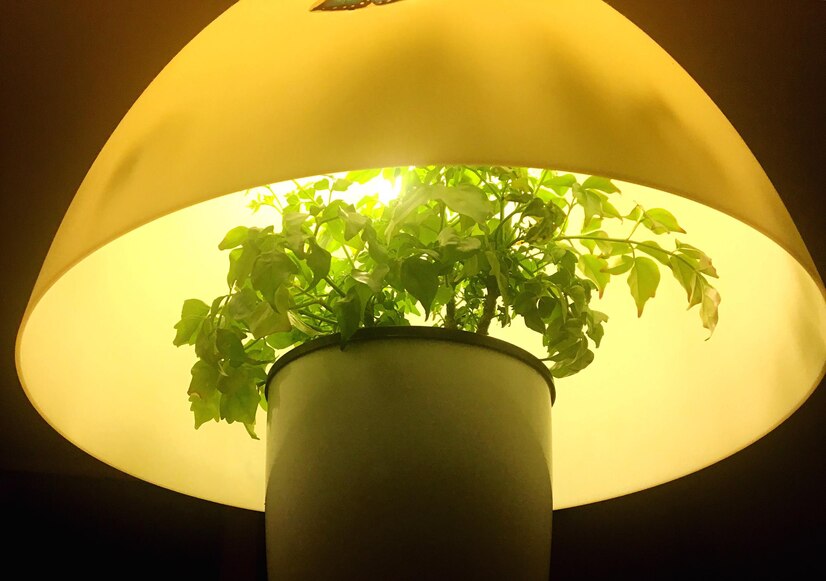
Choosing the appropriate duration of light exposure for different plant species
Different plant species have varying light requirements, and it is important to choose the appropriate duration of light exposure to ensure optimal growth and development. Some plants thrive with longer exposure to light, while others require shorter periods. For example, plants that are native to tropical regions or those with high light requirements, such as tomatoes and peppers, generally benefit from longer periods of light exposure, ranging from 12 to 16 hours per day. On the other hand, plants that are adapted to lower light conditions, such as leafy greens like lettuce or herbs like cilantro, often require around 10 to 12 hours of light per day. Understanding the specific light preferences of different plant species is crucial to providing them with the right conditions for healthy growth.
It is worth noting that the duration of light exposure should also consider the plant’s growth stage. For instance, seedlings and young plants may require longer periods of light exposure to promote vigorous growth and root development. As the plants mature and transition into the flowering or fruiting stage, the duration of light exposure may need to be adjusted to accommodate their changing needs. It is essential to refer to reliable sources, consult plant-specific guidelines, or seek advice from experienced gardeners or experts to determine the optimal duration of light exposure for different plant species at various growth stages. By providing plants with the right amount of light exposure, gardeners can ensure healthier and more productive outcomes in their indoor gardens or hydroponic setups.
• Plants native to tropical regions or with high light requirements, such as tomatoes and peppers, benefit from longer periods of light exposure (12-16 hours per day).
• Plants adapted to lower light conditions, like leafy greens and herbs, often require around 10-12 hours of light per day.
• Understanding the specific light preferences of different plant species is crucial for healthy growth.
• The duration of light exposure should consider the plant’s growth stage.
• Seedlings and young plants may need longer periods of light exposure for vigorous growth and root development.
• As plants mature into flowering or fruiting stages, the duration of light exposure may need adjustment.
• Reliable sources, plant-specific guidelines, or advice from experienced gardeners can help determine optimal durations for different plant species at various growth stages.
Adjusting grow light settings based on plant growth stages
When it comes to optimizing plant growth under grow lights, adjusting the light settings based on different plant growth stages is essential. As plants go through different phases, their light requirements change, and providing the right amount and intensity of light is crucial for their overall health and development.
During the early vegetative stage, plants primarily require blue light, which promotes leaf and stem growth. This can be achieved by setting the grow lights to emit light in the blue spectrum, typically between 400 and 500 nanometers. As the plants transition into the late vegetative stage and begin to develop flowers, they require a combination of both blue and red light. This helps stimulate the formation of buds and encourages robust flowering. Adjusting the light settings to emit a balanced spectrum of blue and red light, around 450-660 nanometers, can effectively support the plant’s transition into the flowering stage.
• During the early vegetative stage, set grow lights to emit light in the blue spectrum (400-500 nanometers)
• Blue light promotes leaf and stem growth
• In the late vegetative stage, plants require a combination of blue and red light
• Blue and red light stimulate bud formation and encourage robust flowering
• Adjust light settings to emit a balanced spectrum of blue and red light (450-660 nanometers) during this stage
Monitoring and maintaining the health of plants under grow lights
Maintaining the health of plants is crucial for successful gardening under grow lights. Monitoring the various factors that affect plant growth can help identify any issues early on and prevent potential problems. One key aspect to monitor is the moisture level of the growing medium. Overwatering or underwatering can have detrimental effects on plant health, leading to root rot or dehydration. Regularly checking the moisture content and adjusting watering accordingly is essential for maintaining optimal conditions for plant growth.
In addition to moisture levels, monitoring the nutrient levels in the growing medium is vital for ensuring the plants receive the necessary nutrition. Conducting regular soil or solution testing can help identify any nutrient deficiencies or imbalances. This information can then be used to adjust the nutrient solution or amend the soil to provide the plants with the required nutrients for healthy growth. Monitoring the pH level of the growing medium is also important, as certain plants have specific pH preferences. Regularly testing and adjusting the pH can help create an optimal growing environment for the plants and promote their overall health.
• Regularly check the moisture level of the growing medium to avoid overwatering or underwatering
• Adjust watering accordingly based on the moisture content
• Conduct regular soil or solution testing to monitor nutrient levels in the growing medium
• Identify any nutrient deficiencies or imbalances through testing
• Adjust the nutrient solution or amend the soil to provide necessary nutrients for healthy growth
• Monitor and adjust pH level of the growing medium according to specific plant preferences
• Create an optimal growing environment by regularly testing and adjusting pH levels
Combining grow lights with other cultivation techniques for improved plant health
Combining grow lights with other cultivation techniques is a powerful approach to enhance plant health and growth. By incorporating additional methods alongside grow lights, gardeners can create a more optimal growing environment, leading to healthier and more productive plants.
One effective technique is the use of hydroponics systems in conjunction with grow lights. Hydroponics allows plants to grow in nutrient-rich water without the need for soil. When combined with grow lights, this technique provides plants with all the necessary nutrients and light, optimizing their growth and yield. The controlled environment of hydroponics also helps to regulate factors such as temperature, humidity, and pH levels, further supporting healthy plant development.
In addition to hydroponics, another cultivation technique that complements grow lights is the strategic use of supplemental CO2. Carbon dioxide is a vital component for photosynthesis, and higher levels can significantly improve plant growth and yield. By monitoring and regulating CO2 levels in a grow room, gardeners can ensure that plants receive optimal concentrations of this essential gas. Combining supplemental CO2 with the appropriate intensity and spectrum of grow lights creates an ideal environment for plants to thrive and maximize their potential.
By integrating different cultivation techniques with grow lights, gardeners can create a synergistic effect that promotes improved plant health and higher yields. The combination of hydroponics and supplemental CO2, along with other innovative techniques, opens up endless possibilities for indoor gardening enthusiasts. Through careful observation, experimentation, and the adoption of best practices, gardeners can take their cultivation endeavors to new heights and enjoy the satisfaction of flourishing, vibrant plants.
• Combining grow lights with hydroponics systems creates a nutrient-rich environment for plants to thrive.
• Hydroponics eliminates the need for soil and allows for precise control over factors such as temperature and pH levels.
• The strategic use of supplemental CO2 alongside grow lights enhances photosynthesis and promotes optimal plant growth.
• Monitoring and regulating CO2 levels in a grow room ensures that plants receive the ideal concentration of this essential gas.
• Integrating different cultivation techniques with grow lights can lead to improved plant health and higher yields.
• Experimentation, observation, and adoption of best practices are key to maximizing the potential of combined cultivation techniques.
Overcoming common challenges associated with grow lights for healthier plants.
One of the common challenges associated with grow lights is the risk of light burn on plants. Light burn occurs when plants are exposed to excessive amounts of light, causing damage to their leaves and overall growth. To overcome this challenge, it is important to carefully monitor the intensity and duration of light exposure for different plant species. For light-sensitive plants, it may be necessary to adjust the distance between the plants and the grow lights or reduce the number of hours they are exposed to artificial light. Additionally, using grow light fixtures with adjustable settings can provide greater control over the light intensity and minimize the risk of light burn.
Another challenge to address is the issue of shadowing caused by grow lights. When grow lights are positioned in a way that creates shadows, certain parts of the plants may not receive adequate light, leading to stunted growth and uneven development. To overcome this challenge, it is crucial to ensure even light distribution throughout the growing area. This can be achieved by using multiple grow lights or by positioning the lights at the appropriate angles and heights to minimize shadows. Regularly rotating the plants and adjusting the height or angle of the lights can also help prevent shadowing and promote uniform growth. By addressing these common challenges, gardeners can ensure healthier plants and maximize the benefits of using grow lights in their cultivation practices.
• Light burn occurs when plants are exposed to excessive amounts of light, causing damage to their leaves and overall growth.
• Carefully monitoring the intensity and duration of light exposure for different plant species can help overcome this challenge.
• Adjusting the distance between the plants and grow lights or reducing the number of hours they are exposed to artificial light can be necessary for light-sensitive plants.
• Using grow light fixtures with adjustable settings provides greater control over light intensity and minimizes the risk of light burn.
• Shadowing caused by grow lights is another common challenge that needs to be addressed.
• Shadows can lead to stunted growth and uneven development in certain parts of the plants.
• Ensuring even distribution of light throughout the growing area is crucial in overcoming this challenge.
• Multiple grow lights or positioning them at appropriate angles and heights can help minimize shadows.
• Regularly rotating plants and adjusting height or angle of lights also prevents shadowing.
By addressing these common challenges, gardeners can ensure healthier plants and maximize the benefits of using grow lights in their cultivation practices.
Please do watch video to know more facts.
What are the main limitations of grow lights?
The main limitations of grow lights are their inability to provide the same spectrum and intensity as natural sunlight, and the challenge of managing the distance between plants and the lights to avoid burning or shading.
How do I choose the right type of grow light?
When choosing a grow light, consider the specific needs of your plants. Different types of lights, such as fluorescent, LED, and HID, have varying spectrums and intensities that cater to different stages of plant growth.
How important is ventilation and airflow in a grow light setup?
Proper ventilation and airflow are crucial in preventing excessive heat buildup and maintaining a healthy environment for plants. Good airflow helps distribute heat evenly and prevents the growth of mold or pests.
Can grow lights cause light burn on plants?
Yes, grow lights can cause light burn if the plants are placed too close to the light source. It is essential to manage the distance between the plants and the lights to prevent damage to the leaves or flowers.
How can I prevent shadowing caused by grow lights?
To prevent shadowing, it is important to position the grow lights strategically and use reflectors or multiple light sources to ensure even coverage throughout the plant canopy.
Should I supplement natural sunlight when using grow lights?
Supplementing natural sunlight can be beneficial for healthier plants. Consider providing a combination of natural and artificial light to ensure a more balanced spectrum and promote optimal growth.
How can I prevent overexposure to artificial light?
To prevent overexposure, it is important to follow the recommended duration of light exposure for different plant species. Monitoring the plants’ response to light and adjusting the settings accordingly is crucial.
How do I adjust grow light settings based on plant growth stages?
Different plant growth stages require different light intensities and spectrums. Adjust the grow light settings according to the specific requirements of each stage, such as providing higher intensity during the flowering stage.
How can I combine grow lights with other cultivation techniques for improved plant health?
Combining grow lights with techniques like proper watering, fertilization, and pest control can enhance plant health. It is important to create a holistic approach to cultivation and address all aspects of plant care.
What are some essential tips for monitoring and maintaining the health of plants under grow lights?
Regularly inspecting plants for signs of stress or deficiencies, maintaining proper humidity levels, and ensuring adequate nutrient intake are some essential tips for monitoring and maintaining plant health under grow lights.

Nicole Burke is a dynamic writer at SouthElMonteHydroponics, fueled by her passion for horticulture and environmental sustainability. Armed with a degree in Environmental Science from a renowned institution, Nicole’s expertise lies in hydroponic gardening, organic farming, and biodiversity conservation. Her insatiable curiosity and love for nature drive her to explore innovative techniques in hydroponics, seeking to revolutionize the way we grow crops in urban environments. Nicole’s writing reflects her deep commitment to promoting eco-conscious practices and fostering a deeper connection between humans and the natural world. Through her engaging storytelling, she inspires others to embrace sustainable living and harness the power of hydroponics for a greener future.


